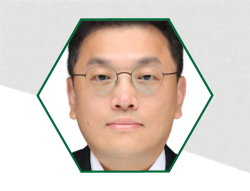Laser annealing technique is receiving significant attention in the field of advanced semiconductor manufacturing. Dual-beam laser annealing using both the continuous wave and pulsed laser is considered to reduce the thermal budget of laser annealing process owing to the short annealing time of the high temperature region. This work reports the comparative study of single-beam laser annealing (SLA) and dual-beam laser annealing (DLA) for dopant activation process. The main objective of this study is investigating the effects of DLA on the electrical, chemical and microstructural characteristics of the phosphorous (P)-doped Si. According to the analysis of annealed samples, it was found that overall, the P-doped Si treated by DLA showed improved electrical properties compared with SLA. On the other hand, diffusion of P in Si, indicated by P concentration profile, did not nearly occur for both SLA and DLA. The crystalline structure of the P-doped Si was modified by the annealing process. Both SLA and DLA induced an epitaxial growth of P-doped Si, the degree of epitaxial growth increased with increasing laser power. The DLA process is considered to improve the performance of the semiconductor device by increasing activation ratio of the dopant while minimizing unwanted diffusion of dopants. The results of this study highlight its potential for applications in the advanced semiconductor fabrication.
Keywords
- Dopant Activation
- Dual-Beam Laser Annealing
- Semiconductor
- Silicon

